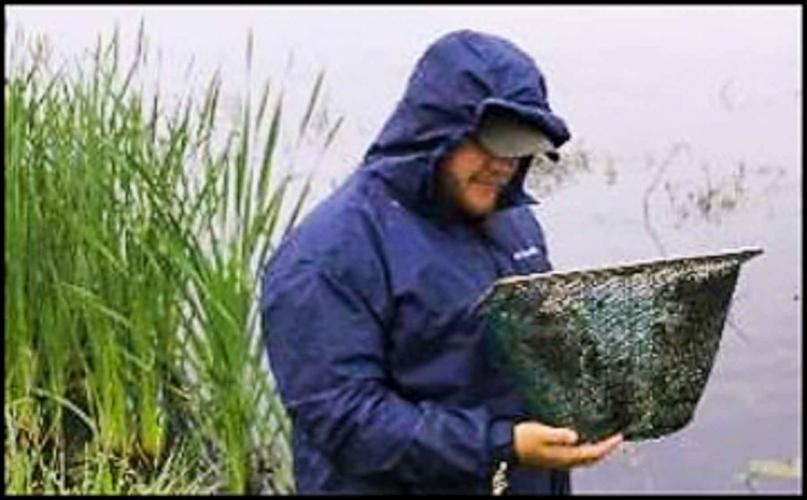Wetland Management
Fish and Amphibian Survey Methods
“You never know what you’re going to find,” says MDC Scientist Frank Nelson, describing wetland surveys for fish and amphibians. “On certain days, some sites are teeming with an array of critters, while others come up nearly empty.” No matter the outcome, these surveys provide insights for managing Missouri’s wetlands.
“Visual surveys alone will never tell you the whole story,” Nelson explains. “It’s easy to spot ducks flushing off the water, but there’s a world of critters hiding in the vegetation and under the water that we can’t readily see.”
That’s where fish and amphibian surveys come in. Monitoring these harder-to-see species is one tool of many that managers use to better conserve wetlands. With periodic sampling, they can learn how these species respond as water is moved on and off the landscape.
Estimating how much monitoring is necessary can be difficult, so Nelson, colleagues from MDC, and the University of Missouri conducted a study to evaluate the efficiency of different survey methods. They compared four common techniques: dip nets, seine nets, mini-fyke nets, and minnow traps.
Over two springs and summers in 29 wetlands across the state, they looked at capture results, season, water depth, proximity to shore and vegetation, and effort required for each of these. Their findings provide guidelines that help managers choose which methods best fit their goals, budget, wetland type, and timeframe.
“A wetland manager’s job is to observe throughout the seasons and years to figure out how to best manage their wetland system,” Nelson says. “Through this study, we’ve identified the strengths and limitations of each gear for taking snapshots of what is thriving under the water.”
Fish and Amphibian Survey Methods Comparison at a Glance
Factors to consider when selecting a survey method:
- What do you want to sample — fish, amphibians, or both?
- How much time do you have — one day or two?
- Are you sampling in deep or shallow water or in vegetation?
- How many people are available to conduct the survey?
Survey methods:
- Dip net
- Seine net
- Mini-fyke net
- Minnow trap
General findings:
Overall, mini-fyke nets detected the most aquatic species, but depending on the site and season, dip nets or minnow traps may be more suitable for detecting amphibian species.










And More...
This Issue's Staff
Editor - Angie Daly Morfeld
Associate Editor - Larry Archer
Photography Editor - Cliff White
Staff Writer - Kristie Hilgedick
Staff Writer - Joe Jerek
Staff Writer – Dianne Van Dien
Designer - Shawn Carey
Designer - Marci Porter
Photographer - Noppadol Paothong
Photographer - David Stonner
Circulation - Laura Scheuler






















